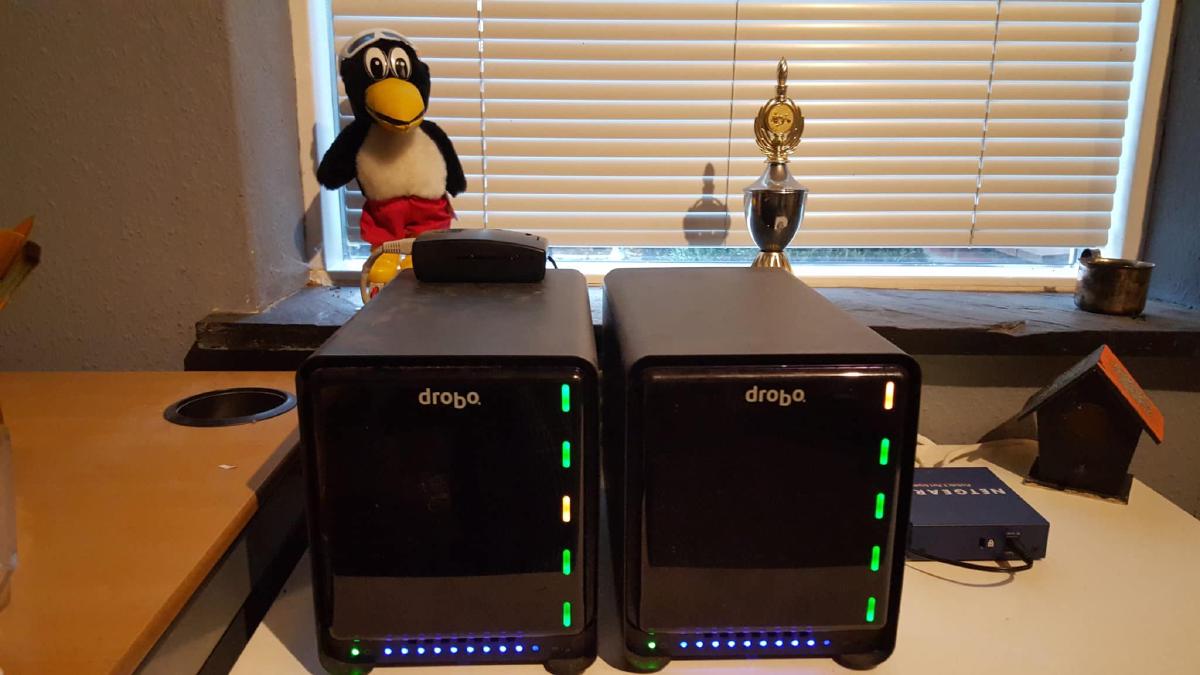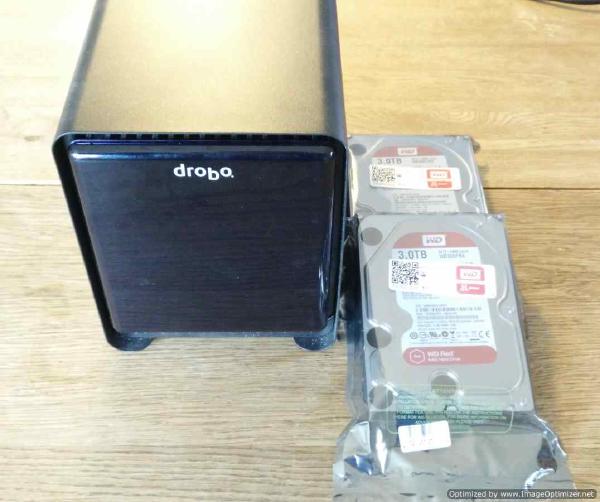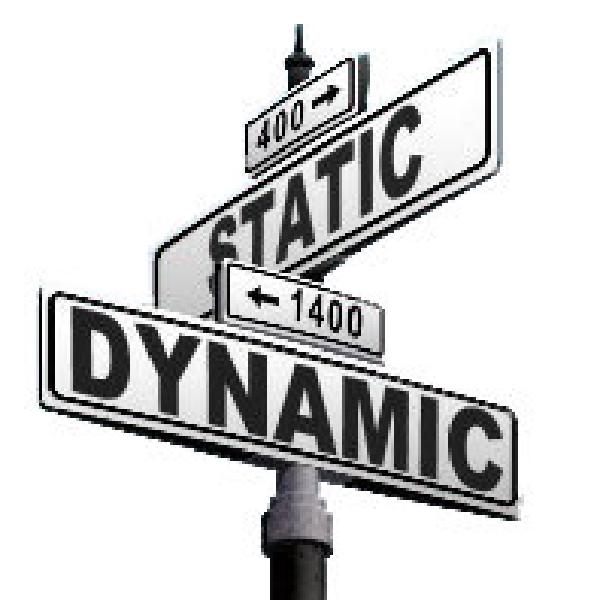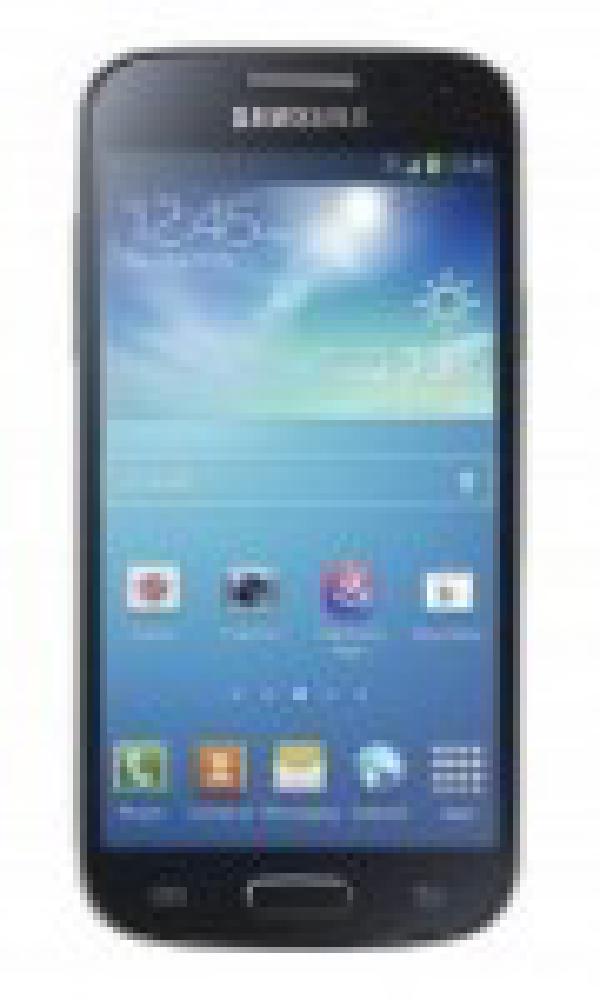It has been about six months with the Drobo‘s and here is my Drobo update as I promised in my blog post I Replaced My FreeNAS Server With A Drobo where I also explain why I came to use Drobo. While the Drobo’s I have is an older model (Drobo-FS) most of the information in this post should apply to newer models as well.
Research#
After using the Drobo’s for a while I had some questions and I began searching the internet for answers. Here are some of the questions from the top of my list.
- Does it use ECC RAM?
- What does Drobo do to ensure data integrity and prevent bit rot?
- Can I use a tool to recover my data if the Unit itself dies?
Finding technical information proved to be quite difficult which was very disappointing. But then again the Drobo’s are a very proprietary product so that is kind of to be expected, I guess. For reference the answers I was able to find from various sources (mostly forums) to the above questions are.
- No information
- Some sort of data scrubbing is done on Drobo’s > 2gen.
- No
I also ran into some horror stories of people having issues. However, most of the issues people were having were caused by a lack of understanding of how the Drobo actually works and what a Drobo is and what it is not. While the Drobo company is positioning the Drobo as simple to use consumer NAS/DAS server. I will argue that some knowledge of the basics of RAID and how to properly use the Drobo is still required. Because the Drobo is not idiot-proof, no device is, if you do stupid things you can get in trouble really fast.
Various blog posts and YouTube videos have proven that people do stupid things to their Drobo and get mad at Drobo because they lost data. Now before you rip my head off I did come across people with legitimate issues. Most of those issues seemed to be Drobo’s that died. I have absolutely taken that into my considerations.
Research Conclusion#
Taking performance out of the equation. I will talk more about that later. I concluded from my little internet research is that using a Drobo is better than using a standard hardware or software RAID but worse the using ZFS with for example FreeNAS. No product is perfect and every device will have compromises that are just life. It is based on looking at the pros and cons of the device you make a decision if you can use that device or not. For me and my situation, the pros long outweigh the cons for now.
My Experience#
So it has been six months since I migrated to the Drobo’s and so far the Drobo’s has been rock solid and I have not had any issues at all.
Disk Replacement#
I have replaced several hard drives with a larger capacity and it takes a very long time to rebuild. Replacing a 1TB hard drive with a 2 TB hard drive takes about 10 hours. Imagine replacing a 6TB. If the time is proportional to hard drive capacity then based on the numbers above replacing a 6 TB would take over 60 hours to rebuild the array. That is a long time and if the Drobo only is configured in single redundancy mode then a disk failure doing that time would result in catastrophic failure and data loss. While I do not know I would hope that rebuild time is faster on newer models.
Performance#
At best the read speed is 50MB/s and write speed is 25MB/s. The newer models should have greatly improved transfer speeds. Still, the transfer speed is a great improvement over my old FreeNAS server. Besides I for the most part is accessing the Drobo’s over WIFI so that is going to be the bottleneck anyway. So for me personally the relatively slow transfer speeds are not a deal-breaker. But it might be for others.
Noise#
The Drobo itself does not make all that much noise. It is definitely not silent as it does suck air through the device but it is not bad. However, because the Drobo has no form of anti-vibration on the hard drives the noise from vibration can be pretty substantial.
Software#
The Drobo Dashboard software is quite intuitive and very easy to grasp. The Drobo does not have that many features and that makes for a simple and easy interface to configure it. My only complaint is that it is a desktop program and it only works on Mac and Windows. Had it been a web-based app like just about all other NAS products it could be configured from any device, not just Mac and Windows. I use Linux more and more and not being able to manage the Drobo from Linux will be a big problem at some point. If this is still the case when the time comes to upgrade it might be the single one reason why I will not be getting a Drobo.
Apps#
On the NAS versions of the Drobo’s like mine Drobo FS or the newer model Drobo N, it is possible to install a small selection of apps. For newer models, it is possible to install apps via the Drobo Dashboard. On the Drobo, FS apps are installed by dropping the application on a special share on the Drobo which is a bit weird. However, I quickly decided that I was not going to burden the Drobo with apps as it does not have that much CPU power and I want the Drobo’s to use all the CPU time to serve and manage my files. So I mounted the Drobo Shares on a RaspberryPi 2 and have that run the apps. Using a RaspberryPi 2 also gives me the possibility to install just about any program I want.
Conclusion#
The Drobo’s work quite well for me at this point and I will stick with them for now. I will return with an update if that changes for some reason.
Drobo Tips#
If you have or are thinking about getting a Drobo here are a couple of tips for you.
- Use NAS hard drives: I do not care what Drobo says. Do not use standard desktop hard drives and especially not archive hard drives.
- Have a backup: Raid or redundancy is not the same as a backup. That goes for all types of raid devices by the way.
- Use Dual disk redundancy: The Drobo takes an awful long time to rebuild when replacing a drive. When rebuilding all the drives are doing a lot of work copying data around and the chances of a second drive failure are quite high.





